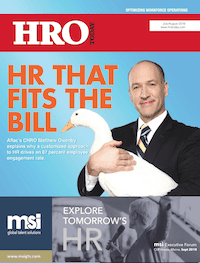Aflac’s CHRO Matthew Owenby explains why a customized approach to HR drives an 87 percent employee engagement rate.
By Debbie Bolla
“Most companies don’t want to customize HR, but if you want employees to feel cared for, it’s a must.” This is the philosophy behind CHRO Matthew Owenby’s unique approach to HR for Aflac. Whether it’s providing easy access to on-site healthcare services to overcome rising benefits costs or giving employees the platform to share feedback that often gets incorporated into the business strategy, the insurance provider understands the impact of employee-driven initiatives. Simply put: People are core to their success.











